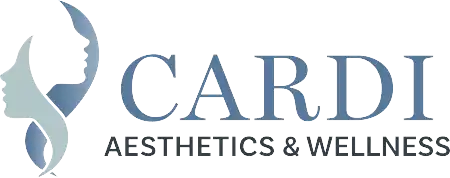 Dysport and Botox are popular choices to reduce fine lines and wrinkles on the face and forehead. While they have medical uses, their primary appeal lies in cosmetic injectables. Both are neurotoxins that block muscle contractions and are safe in small amounts. These nonsurgical wrinkle treatments offer quick recovery rates. Although similar, Dysport and Botox have distinct differences.
Dysport and Botox are popular choices to reduce fine lines and wrinkles on the face and forehead. While they have medical uses, their primary appeal lies in cosmetic injectables. Both are neurotoxins that block muscle contractions and are safe in small amounts. These nonsurgical wrinkle treatments offer quick recovery rates. Although similar, Dysport and Botox have distinct differences.
Choosing the right treatment for your specific needs and goals is crucial. Consulting with an expert, like those at Cardi Aesthetic & Wellness, can make a significant difference. Keep reading to learn more about these treatments.
What is Dysport?
Dysport, made of botulinum toxin type A, can reduce the appearance of glabella lines, which are the lines between your eyebrows that extend upward toward the forehead. These lines become more noticeable when you frown or squint and can become prominent even when relaxed. Dysport is specifically designed for moderate to severe glabella lines, not mild ones. Our team can help you determine if your lines are suitable for this treatment.
Dysport treatment significantly diminishes the lines between the eyebrows, regardless of whether they appear while frowning. Unlike Botox, Dysport allows you to retain the ability to form facial expressions. It effectively reduces unwanted frown lines while preserving the natural flexibility of your expressions, resulting in a more naturally attractive appearance.
What is Botox?
Botox, another form of botulinum toxin type A, is FDA-approved fortreating forehead lines, crow’s feet, and severe glabellar lines, unlike Dysport, which is only approved for glabellar lines. Initially developed to treat muscle spasms, Botox's applications have expanded to cosmetic treatments.
Botox vs. Dysport: Understanding the Differences
At first glance, Botox and Dysport appear identical, both using botulinum type A as muscle relaxers to reduce wrinkles. However, key differences exist:
- Concentration: Dysport is more diluted than Botox (about 3 to 1). This means more Dysport is needed for the same area, but it’s cheaper per unit, so the overall treatment cost is similar.
- Spread: Dysport spreads faster over larger areas, making it ideal for the forehead and 11 lines. Botox, being more concentrated, is better for smaller areas like lip lines and Crow’s feet.
Processes
The procedure for both Dysport and Botox is identical. It begins with a consultation where your provider reviews your medical history, evaluates your wrinkles, and develops a treatment plan. These non-invasive treatments usually take less than 30 minutes, often fitting into a lunch break, with shorter recovery times and higher success rates than invasive surgical procedures. The primary difference lies in the injectable used.
A member of our team will mark the injection sites, apply a numbing agent, and inject either Botox or Dysport. Dysport injections may be deeper for treating larger areas. After the procedure, you can resume your day as usual.
Post-treatment guidelines include:
- Avoid alcohol for 48 hours.
- Do not massage the face to prevent spreading the neuromodulator.
- Avoid exercise for 4 hours.
- Avoid direct sun exposure for 24 hours.
- Do not lie down for 3 hours.
Effectiveness
Both injectables effectively reduce wrinkles, with a2019 study showing that 88% of patients are highly satisfied after 30 days. Dysport lasts 3 to 4 months and requires follow-up treatments to maintain results. Similarly, Botox lasts up to 4 months, potentially extending to 6 months in smaller areas like the eyes and lips. Eventually, the neuromodulator breaks down into proteins absorbed by the body, reducing wrinkles and signaling it's time for a touch-up.
Results
Patients treated with Dysport often see visible improvements in their appearance as early as two to three days post-treatment. The effects of Dysport typically last for three to four months, with touch-ups available to maintain the results. In comparison, Botox may take a bit longer to show effects, typically between three to seven days.
Who Is an Ideal Candidate?
Botulinum toxin injections are suitable for individuals aged 18 to 65 who seek to temporarily improve the appearance of facial wrinkles and fine lines.
Age Restrictions:
- People over 65 should avoid these treatments as natural aging may have caused muscle atrophy in the skin, making the procedures less effective.
Contraindications:
- Those sensitive to botulinum toxin should avoid both Dysport and Botox.
- Pregnant women and individuals with skin disorders like dermatitis or psoriasis should not undergo these treatments.
- Medications for muscle spasms and blood thinners are also contraindications.
Skin Thickness:
- Thick skin is not a contraindication but may yield less noticeable results. A member of our team will evaluate your skin type to determine suitability.
Allergic Reactions:
- Individuals with milk allergies should not use Dysport but can safely opt for Botox.
- Be aware of potential allergic reactions to these treatments.
Muscle Weakness and Difficulty Breathing:
- Report any signs of muscle weakness or difficulty breathing to our office immediately, as these can be serious side effects.
It's crucial to discuss any relevant medical history and medications you are taking with your provider to ensure a safe and effective treatment plan.
Eliminate Wrinkles With Dysport!
Ready to explore the perfect wrinkle-reducing solution for you? Book your appointment today to discuss your unique needs and find out which treatment aligns best with your aesthetic goals and skin type. Don't wait – reclaim your youthful appearance now with expert advice you can trust!

